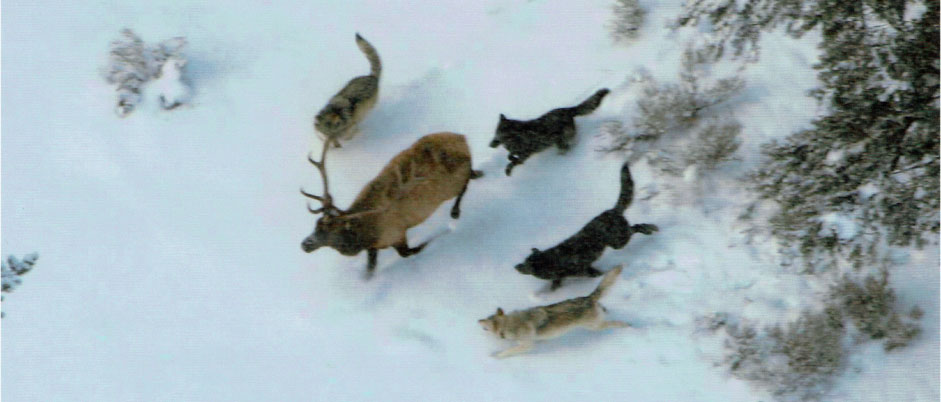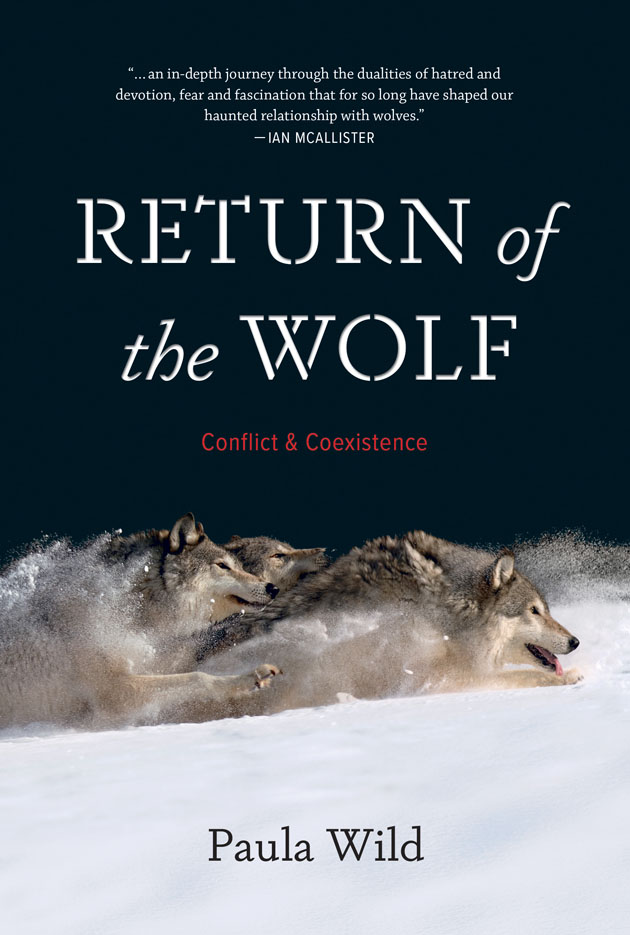Return of the Wolf
Conflict & Coexistence
Silver Medal winner Environment/Ecology Independent Publisher Book Awards
70 photographs with colour insert
A BC Bestseller

Wolves are the marathon runners of the animal world, capable of tirelessly trotting all night with bursts of speed up to sixty kilometres per hour when taking down prey. They develop complex hunting strategies, are able to hear sounds more than ten kilometres away and can swim thirteen kilometres of open ocean.
As pack animals, wolves communicate in a variety of ways including body language, scent marking and vocalizing, with each wolf possessing a howl as distinct as a human fingerprint.
Wolves are perceptive, discerning and experience a wide range of emotions. Some scientists believe that their complex social structures and intimate family bonds are more similar to humans’ than any other mammal including primates.
The carnivore has unique relationships with ravens, bears, cougars and coyotes. But its most complex relationship – and perhaps most dangerous – is with humans.
Wolves once roamed most of North America and Eurasia but vigorous eradication programs drastically reduced their numbers and in some cases destroyed entire populations. Now wolves are returning to their former habitat and encounters with humans are becoming more frequent.
In Return of the Wolf, Paula Wild examines the complex web of myth and misconception that surrounds this predator. Along the way, she investigates why Eurasian wolves appear to be more aggressive toward humans than their North American cousins and looks at how people’s behaviour can put wolves at risk.
She also explores the dynamic between dogs and wolves, as well as innovative methods to prevent livestock predation and the controversy over wolf culls to save endangered caribou.

In a compelling blend of natural history, indigenous stories, personal accounts and interviews with scientists and others, Wild examines our evolving relationship with wolves. She discovers that the canids can and do live closer to human habitation than most people realize and consults with wildlife specialists, ranchers and rural residents on ways to minimize conflict.
Is it possible for humans and wolves to coexist? One thing is certain: just as wolves have affected human actions, attitudes and cultures for centuries, human perceptions continue to shape the destiny of the wolf.
Print editions
Available in Canada October 2018
Available in the USA March 2019
Ebooks
Available in Canada October 2018
Internationally March 2019
Return of the Wolf can be ordered at bookstores throughout Canada and the USA.
It can also be ordered from Indigo, amazon.ca and amazon.com
If you’d like an autographed copy, contact Paula.
Banner photo: Members of the Druid pack chase a bull elk in Yellowstone National Park. Photo by Doug Smith, US National Park Service.



